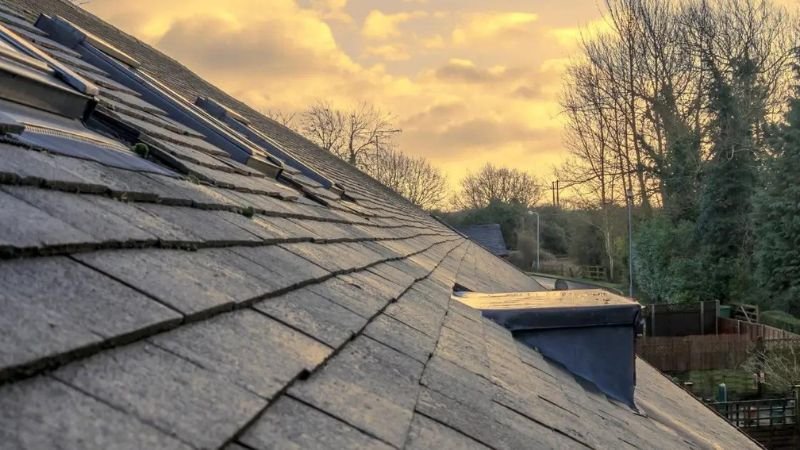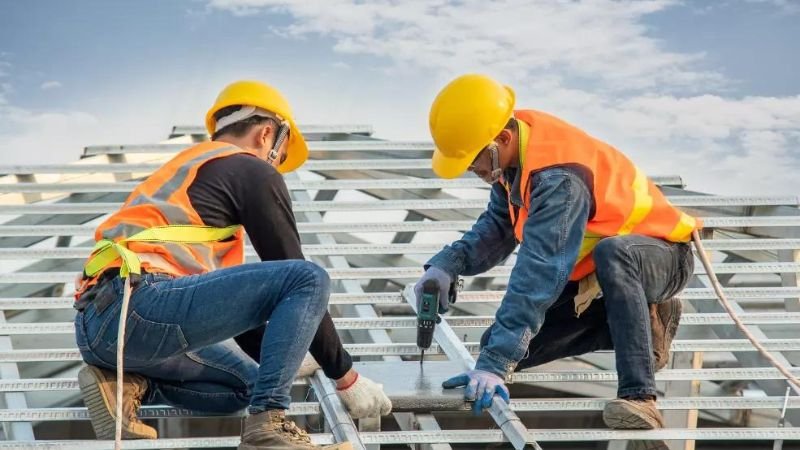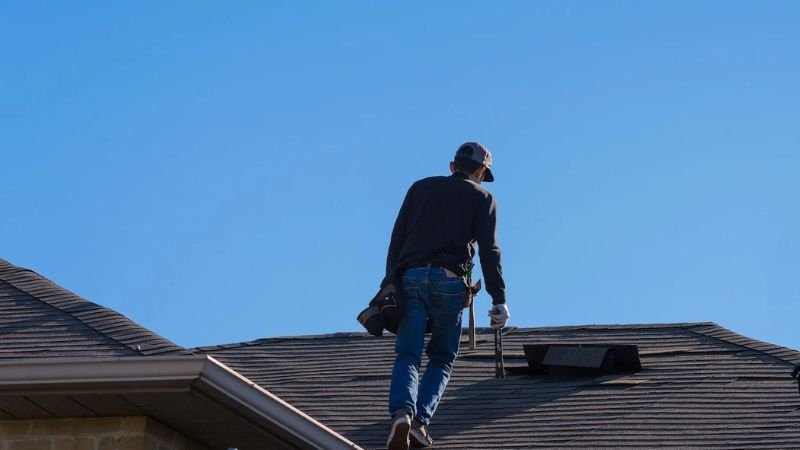Are you noticing leaks, shingles curling, or increased energy bills? Perhaps there is something your roof is trying to tell you. Knowing the signs that indicate it’s time for a roof replacement can save you from costly repairs down the road. Whether your roof is aging or has endured severe weather, understanding these signals is crucial. This guide explores ten common signs that indicate it’s time to consider replacing your roof. From visible damage to interior clues like water stains, each indicator plays a vital role in assessing your roof’s health. Don’t wait until a small problem becomes a major headache; learn how to spot the signs and take proactive steps to protect your home.
10 Signs You Need To Replace Your Roof
1. Missing or Damaged Shingles
Shingles that are missing or broken are a dead giveaway that the barrier protecting your roof is weak. Shingles can be dislodged by strong winds, heavy rain, or simply due to aging and wear. When shingles are missing or damaged, they expose the underlying layers of the roof to the elements, including water and UV rays. This exposure can lead to water leaks, which in turn can cause damage to your home’s interior, including ceilings, walls, and insulation. It’s important to inspect your roof regularly, especially after severe weather, to identify and replace missing or damaged shingles promptly.
Also, Read – 10 Advantages And Disadvantages Of Pitched Roof
2. Shingle Granules in Gutters
Granules applied to asphalt shingles give them fire resistance and UV protection from the sun. Over time, these granules wear off due to exposure to weather elements. If you notice an accumulation of granules in your gutters or around the downspouts, it’s a sign that your shingles are deteriorating. Granule loss can accelerate the aging process of your roof, making it more susceptible to leaks and other damage. It’s advisable to have a professional roofer inspect your roof if you notice excessive granule loss to determine if replacement is necessary.
3. Sagging Roof Deck
A sagging roof deck is a serious structural issue that indicates significant water damage and potential structural failure. This condition usually occurs when moisture penetrates the roof’s protective layers and saturates the decking material. Over time, the saturated decking can weaken and sag, compromising the roof’s integrity and posing a safety risk. If you notice any areas of your roof that appear to be sagging or dipping inward, it’s crucial to contact a roofing professional immediately for a thorough inspection and assessment. Addressing a sagging roof promptly can prevent further damage to your home’s structure and potentially costly repairs.
4. Water Stains on Ceilings or Walls
Water stains on your ceilings or walls are a visible sign of roof leaks and should never be ignored. These stains are typically caused by water infiltrating through damaged or deteriorating roofing materials and seeping into the interior of your home. Even small water stains can indicate significant roof damage, such as compromised underlayment or decking. Ignoring water stains can lead to mold growth, wood rot, and further deterioration of your home’s structural integrity. It’s essential to identify the source of the leak and address it promptly to prevent additional damage and costly repairs.
5. Peeling or Blistering Paint
Peeling or blistering paint on your interior walls or ceilings can be a symptom of moisture infiltration from a damaged roof. Excess moisture can enter your home through compromised roofing materials or inadequate attic ventilation, causing paint to lose adhesion and peel away. Addressing the underlying roof issue is crucial to preventing further interior damage and maintaining your home’s aesthetics. A professional inspection can help determine if roof replacement is necessary to resolve the moisture problem and protect your home’s interior surfaces.
Also, Read – Top 9 Roof Maintenance Tips For Homeowner
6. Visible Signs of Aging
Roofing materials have a limited lifespan depending on their type and quality. Visible signs of aging, such as warped or cracked shingles, rust spots on metal roofs, or general wear and tear, indicate that your roof may be nearing the end of its serviceable life. As roofs age, they become less effective at protecting your home from the elements, leading to increased vulnerability to leaks and other damage. Regular inspections by a qualified roofing professional can help you assess the condition of your roof and determine if replacement is necessary to maintain your home’s structural integrity and weather resistance.
7. Increased Energy Bills
An inefficient roof can contribute to higher energy bills by allowing heat or cold air to escape from your home. Poor insulation due to roof damage or aging can force your HVAC system to work harder to maintain comfortable temperatures indoors, resulting in increased energy consumption and costs. If you notice a sudden spike in your energy bills without a corresponding increase in usage, your roof’s condition may be contributing to the problem. Addressing roof issues, such as inadequate insulation or damaged roofing materials, can improve your home’s energy efficiency and reduce heating and cooling costs over time.
8. Light Penetration in Attic
During a daytime inspection of your attic, if you notice sunlight coming through the roof boards or visible holes, it indicates that your roof is compromised and needs attention. Even small openings can allow water, pests, and debris to enter your home, leading to further damage and deterioration. Promptly addressing these issues can prevent costly repairs and protect your home’s structural integrity. A professional roofing inspection can help identify the extent of the damage and recommend appropriate repairs or replacement to ensure your roof continues to provide reliable protection for your home.
9. Mold or Moss Growth
Mold or moss growth on your roof surface can indicate excessive moisture retention, often due to poor drainage or inadequate sunlight exposure. While mold can be cleaned, its presence suggests underlying issues with your roof that may require replacement to prevent recurring growth and structural damage. Addressing drainage issues, improving ventilation, and replacing damaged roofing materials can help mitigate moisture problems and reduce the risk of mold growth. Regular roof maintenance and inspections can help identify potential issues early and prevent them from escalating into costly repairs or replacements.
10. Neighborhood Roof Replacements
If many homes in your neighborhood are undergoing roof replacements, it may be a sign that your roof is of a similar age and condition. Roofs in the same area are often exposed to similar weather conditions and environmental factors, which can impact their lifespan and condition. If your neighbors are proactively replacing their roofs, it may be wise to consider doing the same to avoid unexpected issues and maintain your home’s value and curb appeal. Consulting with a roofing professional can help you assess the condition of your roof and determine if replacement is necessary to ensure continued protection and safety for your home.
Conclusion
Knowing when it’s time to replace your roof can prevent extensive damage and costly repairs. By recognizing the signs early—like shingle deterioration, leaks, or energy inefficiency—you can act swiftly to protect your home. Regular inspections and maintenance are key to extending your roof’s lifespan. Whether you see visible damage or notice interior warning signs, addressing roof issues promptly ensures your home remains safe and secure. Don’t overlook these crucial indicators; stay informed and proactive in maintaining your roof’s integrity for years to come.
FAQs
How do I know if my roof needs replacing?
If you notice missing or curling shingles, sagging spots, or granules in gutters, these are signs your roof may need replacement. Also, interior signs like water stains on ceilings or increased energy bills can indicate roof problems.
How often should I replace my roof?
The lifespan of a roof varies by material but generally ranges from 20 to 50 years. Factors such as weather conditions and maintenance affect longevity. Inspecting your roof regularly can help determine when replacement is necessary.



